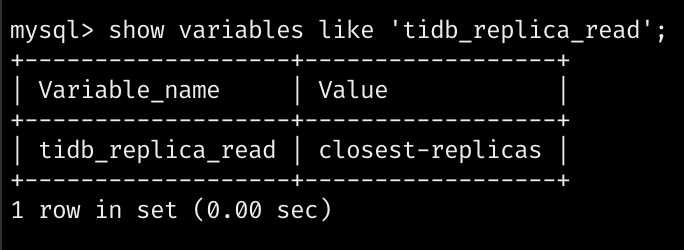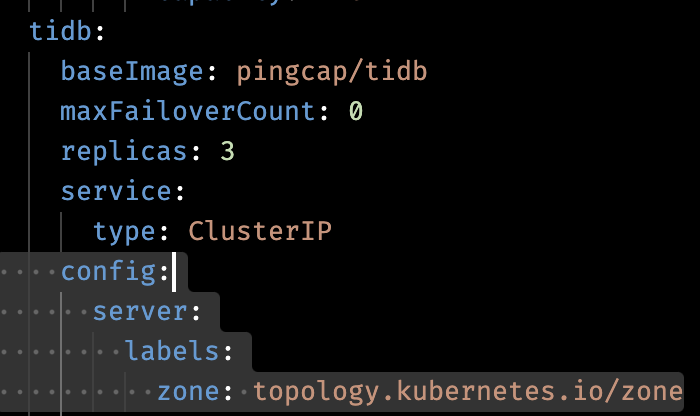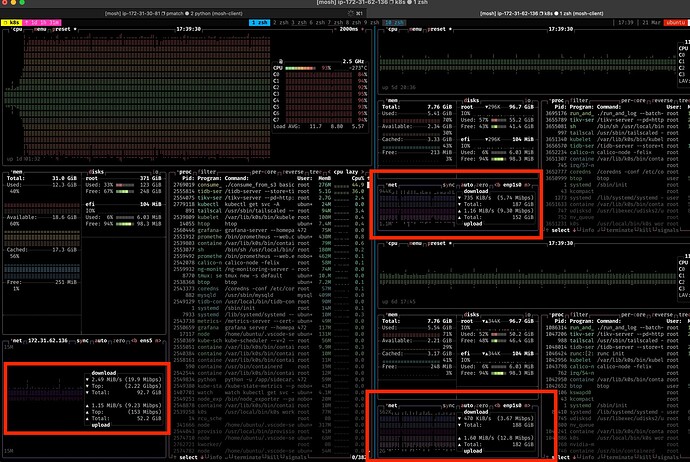Hey TiDB folks,
How can I configure TiDB on Kubernetes so that stale reads within a zone don’t generate cross-zone traffic?
For example, my test K8s cluster has 3 nodes, each in a physically separate region.
In each node I’m running one PD, one KV, and one DB instance.
Here’s the K8s TidbCluster config.
Note I’m using location-labels and isolation-level to try to hint to TiDB what the network topology is.
Of course, I’ve also labeled the nodes:
> kubectl get nodes --show-labels
NAME STATUS ROLES AGE VERSION LABELS
devenv Ready <none> 125m v1.26.2+k0s beta.kubernetes.io/arch=amd64,beta.kubernetes.io/os=linux,kubernetes.io/arch=amd64,kubernetes.io/hostname=devenv,kubernetes.io/os=linux,topology.kubernetes.io/zone=zone-devenv
td2 Ready <none> 125m v1.26.2+k0s beta.kubernetes.io/arch=amd64,beta.kubernetes.io/os=linux,kubernetes.io/arch=amd64,kubernetes.io/hostname=td2,kubernetes.io/os=linux,topology.kubernetes.io/zone=zone-td2
td3 Ready <none> 125m v1.26.2+k0s beta.kubernetes.io/arch=amd64,beta.kubernetes.io/os=linux,kubernetes.io/arch=amd64,kubernetes.io/hostname=td3,kubernetes.io/os=linux,topology.kubernetes.io/zone=zone-td3
Unfortunately, even when I do pure stale reads* from a zone to the DB server in the same zone, I’m seeing cross-zone traffic.
It appears as though the DB server is randomly assigning reads to KV servers, regardless of where they are.
What I expected to happen is for the DB to say “oh this is stale so my local KV can service it” and then send it to the local KV.
Thanks!
*My stale reads look like SELECT sk FROM sk AS of timestamp tidb_bounded_staleness (NOW () - INTERVAL 60 SECOND, NOW ()) WHERE pkh4 IN (...)






